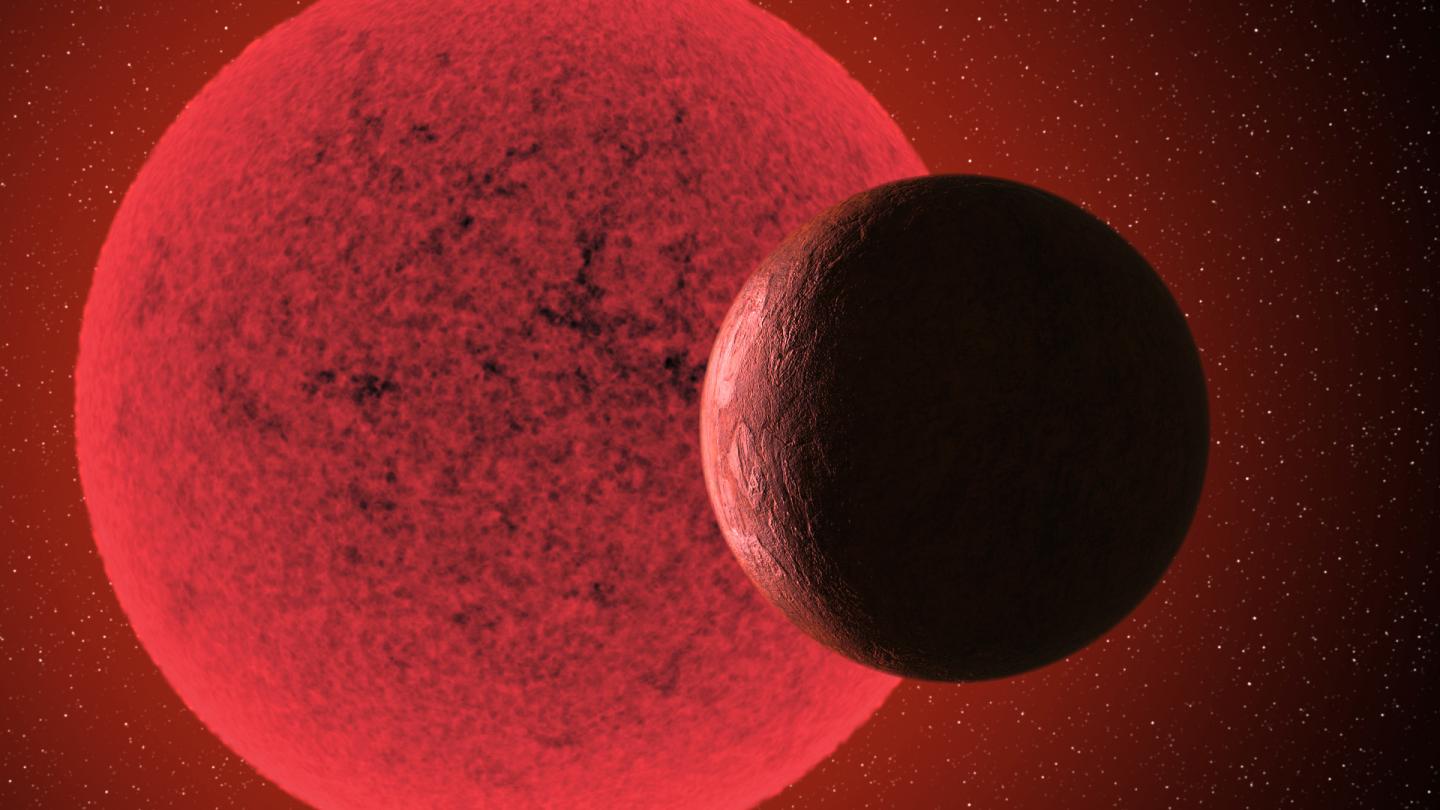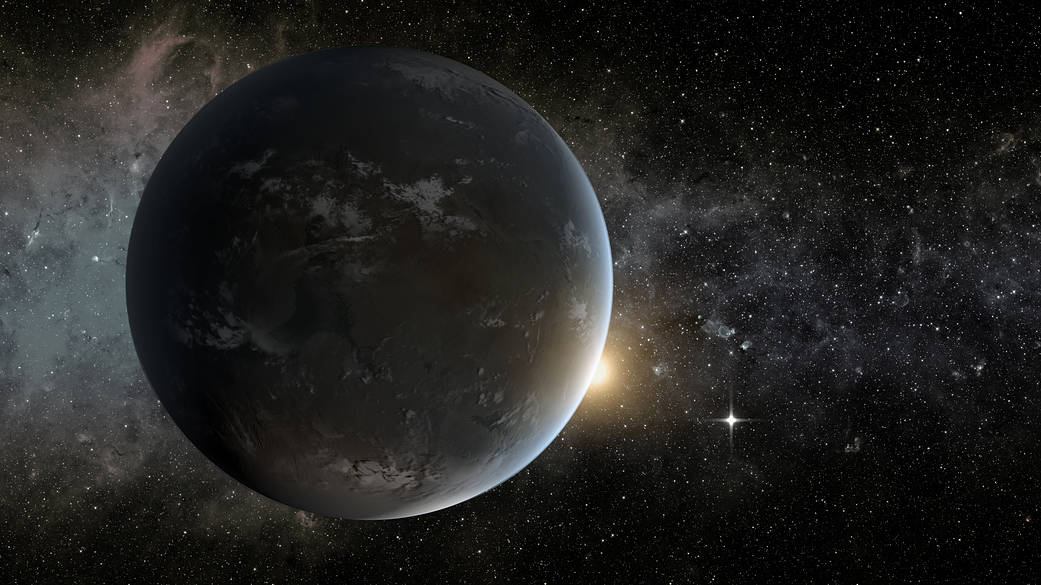Newfound super-Earth has speedy orbit around red dwarf star
It's the second shortest orbit of any planet around a red dwarf star discovered so far.

A newfound exoplanet has been discovered 36 light-years from Earth.
The exoplanet, named GJ 740 b, is three times the mass of Earth and orbits a red dwarf star called GJ 740. Each orbit takes just 2.4 days, making it the second shortest orbit of any planet around a red dwarf star discovered so far.
Compared to our sun, GJ 740 is tiny, with between 0.08 and 0.45 solar masses. It is also far cooler, with estimated surface temperatures between 3,860 and 6,200 degrees Fahrenheit (2,127 to 3,427 degrees Celsius). For context, our sun's visible surface is approximately 10,000 degrees Fahrenheit (5,500 degrees Celsius).
Related: 7 ways to discover alien planets
"The mass and the period suggest a rocky planet, with a radius of around 1.4 Earth radii, which could be confirmed in future observations with the TESS satellite," lead researcher Borja Toledo Padrón, a doctoral student at the Instituto de Astrofísica de Canarias (IAC), said in a statement, referring to NASA's Transiting Exoplanet Survey Satellite (TESS).
This duo is of particular importance due to its relative proximity to Earth. As such, the pair could find themselves the object of future observations using very large telescopes such as ESA's recently launched Characterising Exoplanets Satellite (CHEOPS). Such observations could confirm whether the super-Earth is alone in its orbit around GJ 740.
This discovery of the newfound super-Earth was part of the HARPS-N red Dwarf Exoplanet Survey (HADES) which relies on the High Accuracy Radial Velocity Planet Searcher for the Northern Hemisphere (HARPS-N) instruments, part of the Galileo National Telescope (TNG) at the IAC's Roque de Los Muchachos Observatory, Spain. In total, researchers sifted through 11 years' worth of data to be able to identify the new super-Earth orbiting GJ 740.
Get the Space.com Newsletter
Breaking space news, the latest updates on rocket launches, skywatching events and more!
Related: Newfound super-Earth alien planet whips around its star every 0.67 days
In recent years, the search for exoplanets has been gaining momentum, building upon findings from NASA's Kepler Space Telescope and TESS missions.
Cooler stars like GJ 740 make particularly good hunting grounds for new planets, as scientists predict each of these stars has on average 2.5 planets in orbits of less than 200 days. These predictions were based on data collected during the Kepler mission, regarded as one of the most successful exoplanet-hunting missions to date.
NASA's Kepler Space Telescope operated for just under nine years until its decommissioning in 2018. As of November 2020, Kepler had been credited with discovering 2,392 confirmed exoplanets. Of those worlds, 156 are located around cool stars and were discovered using the transit method, which involves searching for tiny dips in the brightness of a star caused by a planet passing in front of it.

But the transit method is not the only way to find exoplanets orbiting distant stars. In this study, researchers employed the radial velocity method, which involves measuring the small variations in the velocity of a star that are driven by the gravitational tugs of an orbiting planet.
According to NASA, a total of 837 planets have been discovered using the radial velocity method, so far, making up almost 20% of all exoplanet discoveries. Of these findings, 116 of the exoplanets reside around red dwarf stars. Though highly effective, there are however some drawbacks to such a method.
"The main difficulty of this method is related to the intense magnetic activity of this type of stars, which can produce spectroscopic signals very similar to those due to an exoplanet," co-author Jonay I. González Hernández said in the same statement.
The researchers said their work also suggests the presence of a second planet approximately the size of Saturn that orbits GJ 740 every nine years. However, that radial velocity signal could have been caused by the magnetic cycle of the star, so the scientists are cautious and hope to gather more data.
The results of this study are published in the April issue of the journal Astronomy & Astrophysics.
You can follow Daisy Dobrijevic on Twitter at @DaisyDobrijevic. Follow us on Twitter @Spacedotcom and on Facebook.
Join our Space Forums to keep talking space on the latest missions, night sky and more! And if you have a news tip, correction or comment, let us know at: community@space.com.

Daisy Dobrijevic joined Space.com in February 2022 having previously worked for our sister publication All About Space magazine as a staff writer. Before joining us, Daisy completed an editorial internship with the BBC Sky at Night Magazine and worked at the National Space Centre in Leicester, U.K., where she enjoyed communicating space science to the public. In 2021, Daisy completed a PhD in plant physiology and also holds a Master's in Environmental Science, she is currently based in Nottingham, U.K. Daisy is passionate about all things space, with a penchant for solar activity and space weather. She has a strong interest in astrotourism and loves nothing more than a good northern lights chase!
